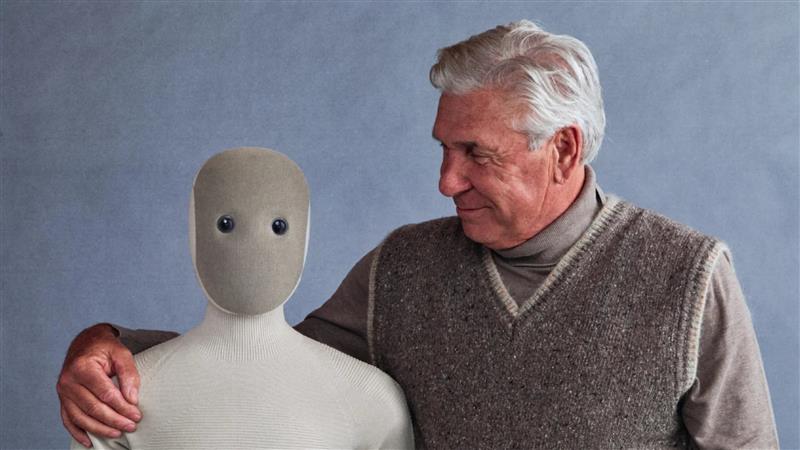 Credit: 1x Technologies
Credit: 1x Technologies On October 28, Norway-based 1X Technologies announced its Neo humanoid robot for household chores, while also exposing how AI robot voice systems’ rise and embodied AI is changing our idea of intelligent machines, even when the intelligence still comes from a human operator.
Neo’s launch sparked both excitement and confusion online, mainly due to its lifelike movements and soft design. Many have questioned whether the robot’s abilities were as advanced as the company claimed.
Human Intelligence Behind Smart Machines
When 1X Technologies released its slick 10-minute promotional video, Neo seemed like the next great leap in personal robotics: wrapped in soft fabric and fitted out with synthetic voice generation.
The video quickly went viral, reaching nearly 30 million views. Yet, according to The Wall Street Journal’s Joanna Stern, Neo’s intelligence is more illusion than reality.
In contrast, the AI robot voice isn’t independent but rather teleoperated by a person wearing a virtual reality (VR) headset, controlling its actions and seeing it through its camera eyes.
At $20,000 or $500 a month, Neo offers a strange bargain: you are inviting a stranger into your home virtually to do your chores. Despite the robot voices text to speech system, which puts it in a friendlier tone, the test by Stern revealed the robot nearly toppled over while closing a dishwasher and took two minutes to fold a shirt.
Price of Imperfect Embodied AI Robots
1X CEO Bernt Børnich believes Neo’s current stage is part of a larger experiment in perfecting technologies for embodied ai voices.
“If you buy this product, it is because you’re OK with that social contract. If we don’t have your data, we can’t make the product better,” he told WSJ.
Each Neo sends video back to the company, helping to train conversational AI robots to understand and respond to household environments more naturally. Børnich even claimed Neo is “safer” than hiring a real cleaner, though privacy advocates question that logic.
The founder of the company coined the term robotics slop for Neo’s awkward learning phase, comparing it to early AI-generated art that looked imperfect at first but improved through exposure and feedback.
For 1X, early adopters are key to replacing humans with AI in household labor. The more users provide data, the quicker these systems will evolve into capable assistants that actually perform everyday tasks all by themselves.
Yet, issues of AI voice authenticity still linger on. Can a robot’s tone ever feel trustworthy when users know a remote human might be operating it from behind?
This experiment also deals with how robotic voices replace humans in familiar roles, but the ethical and emotional questions linger when it comes to human’s increased dependence on machines for companionship or service. Neo’s exaggerated movements show how human-robot interaction is a challenge, from both technical and social perspectives, where confidence and comfort are concerned.
Experts believe that further advances in multimodal AI for robots, which integrate vision, sound, and motion, will one day enable machines like Neo to behave more naturally in real homes.
For the time being, the 1X experiment is another addition to the creation of robot voices, fusing AI with emotion-driven design to make technology less mechanical.
And as embodied AI voice robots continue to evolve, they stand as reminders that progress in robotics often begins with imperfection, and the journey toward seamless automation still needs a human touch behind every single AI robot voice.
Inside Telecom provides you with an extensive list of content covering all aspects of the tech industry. Keep an eye on our Intelligent Tech sections to stay informed and up-to-date with our daily articles.